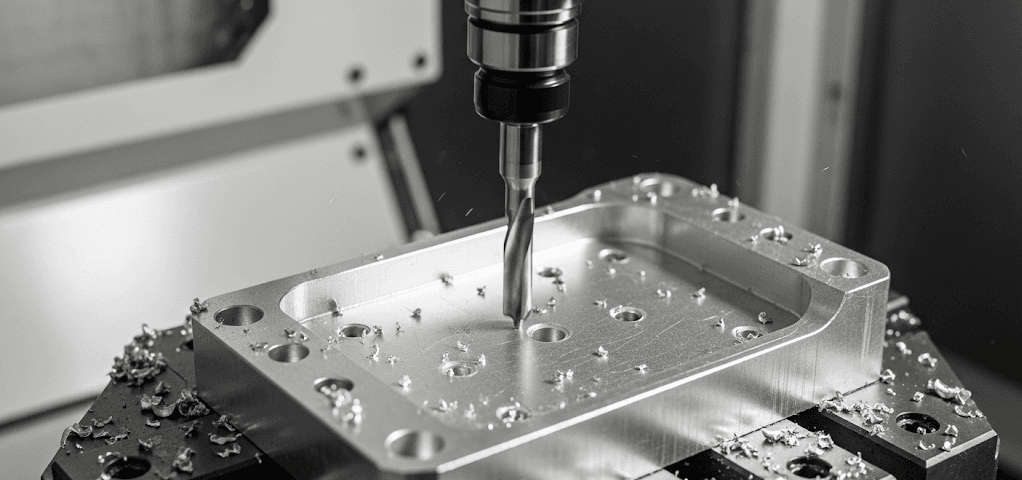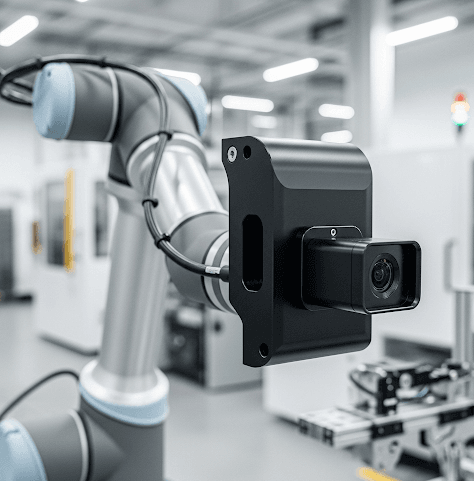Rapid prototyping to volume CNC machining services
Machining Services
CNC milling
CNC turning
cnc 5 axis
Surface treatment
A robot sensor bracket is far more than a simple mounting plate; it is a precision-engineered component critical to the success of any machine vision system. At ly-machining, we specialize in the CNC machining of these brackets, ensuring your robot camera or sensor has a perfectly stable and accurate view of its target.
The reliability of your entire vision system depends on the rigidity and positional accuracy of its mount. Through our advanced CNC milling services, we create a robot sensor bracket that acts as a vibration-free foundation, translating to clear images and dependable data acquisition.

CNC Machining Challenges for Vision System Brackets
The CNC machining of a robot sensor bracket presents unique engineering challenges. The primary goal is to eliminate vibration. Any instability in the bracket will be amplified by the robot’s motion, resulting in blurry images from the robot camera and failed inspections. The bracket must be designed and machined for maximum stiffness.
Positional accuracy is another critical factor. The mounting features for the robot camera must be machined with precise tolerances relative to the robot arm interface to ensure a consistent and known Tool Center Point (TCP). Balancing this required rigidity with the need for a lightweight design is a key challenge our CNC milling expertise solves.

Our CNC Milling Process for Your Robot Sensor Bracket
Our process begins with a thorough engineering review of your design. We often advise on adding stiffening ribs or optimizing geometry to improve the performance of the robot sensor bracket. We typically recommend Aluminum 6061-T6 for its excellent balance of strength, weight, and machinability.
Using 5-axis CNC machining, we can create complex geometries and angled mounting surfaces in a single setup. This ensures all features are perfectly aligned. Our CNC milling toolpaths are optimized for a smooth finish and stress-free state, producing a bracket that is inherently stable and ready for the most sensitive robot camera equipment.

Achieve Flawless Vision with a Precision Bracket
A robot sensor bracket produced by ly-machining provides the ultimate stability for your vision system. The exceptional rigidity from our intelligent design and CNC machining process means you get clear, usable images even during rapid robot movements. This directly translates to higher pass rates for inspection tasks.
The high dimensional accuracy of our parts ensures that if a robot camera needs to be replaced, the new one will be in the exact same position, minimizing downtime and recalibration efforts. Our parts are not just brackets; they are a guarantee of consistency for your automation process.

Performance Data: ly-machining vs. Standard Brackets
Our engineering-focused CNC machining delivers measurably better results for sensitive applications like mounting a robot camera.
| Attribute | ly-machining Standard | Standard Fabricated Bracket | Engineering Advantage |
| Manufacturing Method | 5-Axis CNC Milling from Solid | Bent & Welded Sheet Metal | Superior rigidity, no weak points. |
| Vibration Damping | High (Engineered Rigidity) | Low (Prone to Flex) | Ensures clear, stable images from the robot camera. |
| Camera Mount Flatness | 0.02 mm | > 0.25 mm | Prevents sensor distortion and focus issues. |
| Positional Tolerance | ±0.025 mm | ±0.5 mm | Guarantees repeatable TCP for vision system. |
| Finishing | Matte Black Anodizing | Plain or Painted | Reduces reflections and glare for the robot camera. |
Case Study: Solving a Blurry Image Problem
A client in the electronics industry was experiencing a 20% failure rate on their automated visual inspection line. The issue was traced to blurry images from the robot camera, caused by vibration from their flimsy, off-the-shelf bracket.
ly-machining collaborated with their engineers to design a new, single-piece robot sensor bracket. We used CNC milling to machine it from a solid block of aluminum, creating a lightweight but incredibly stiff part. After installation, image clarity was perfect and the inspection failure rate dropped to zero.

FAQ
1. How does your CNC machining process help reduce vibration for a robot camera?
From an engineering perspective, vibration is managed through rigidity. Instead of using bent sheet metal, our CNC machining process carves the robot sensor bracket from a solid block of material. This monolithic design has no welds or bends that can flex. We use CNC milling to create strategic stiffening ribs and profiles that produce the stiffest possible part at the lowest possible weight.
2. What positional accuracy can you hold for the camera mounting points?
We can hold positional tolerances of ±0.025 mm (25 microns) for critical mounting features on a robot sensor bracket. This is crucial for ensuring the robot camera is located exactly where the system’s calibration expects it to be. This level of precision is standard for our multi-axis CNC machining centers and is verified with CMM inspection.
3. Why is matte black anodizing the recommended finish for a robot sensor bracket?
While we offer various finishes, we strongly recommend Type II matte black anodizing for any bracket holding a robot camera or optical sensor. The non-reflective surface prevents stray light and glare from bouncing off the bracket and into the camera’s lens. This simple step in our process eliminates a common source of image quality problems in machine vision applications.
Related products
- Aluminum
Aluminum keycaps
- Aluminum
Aluminum CNC machining parts





